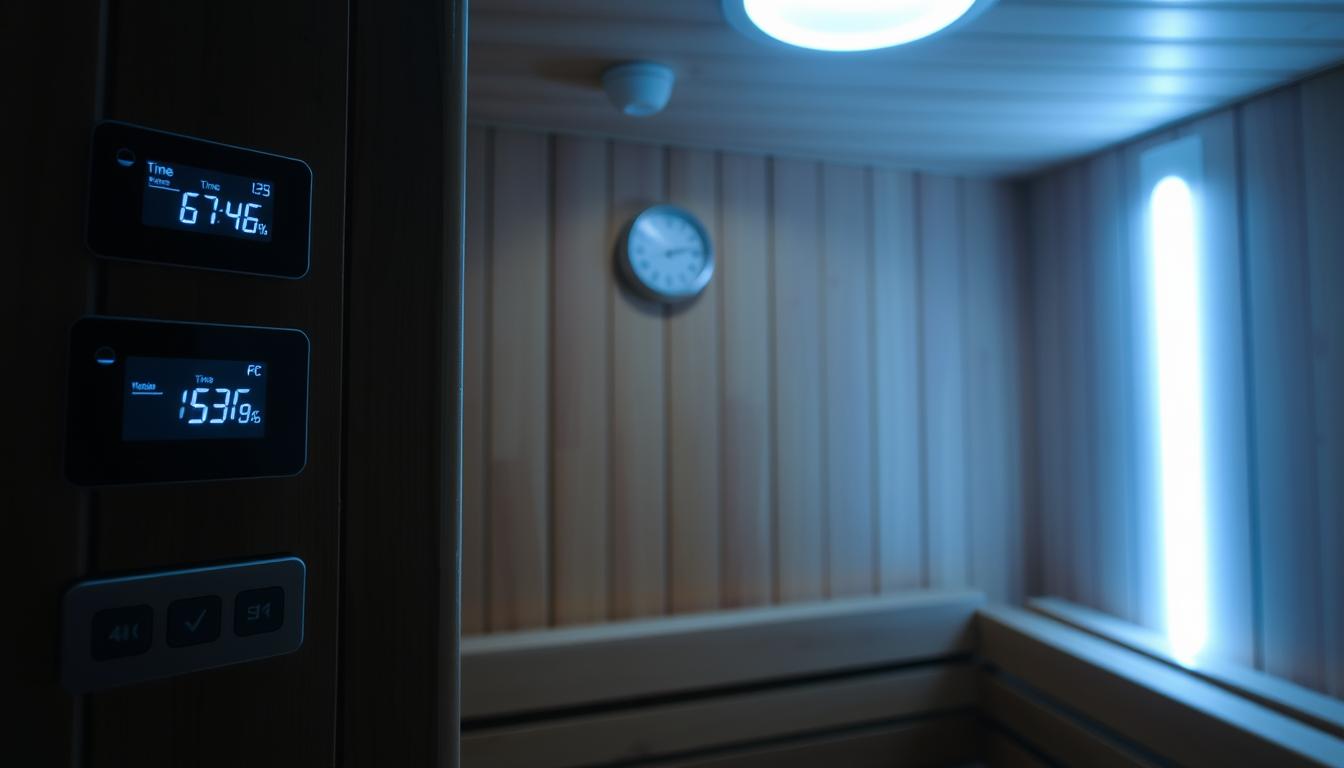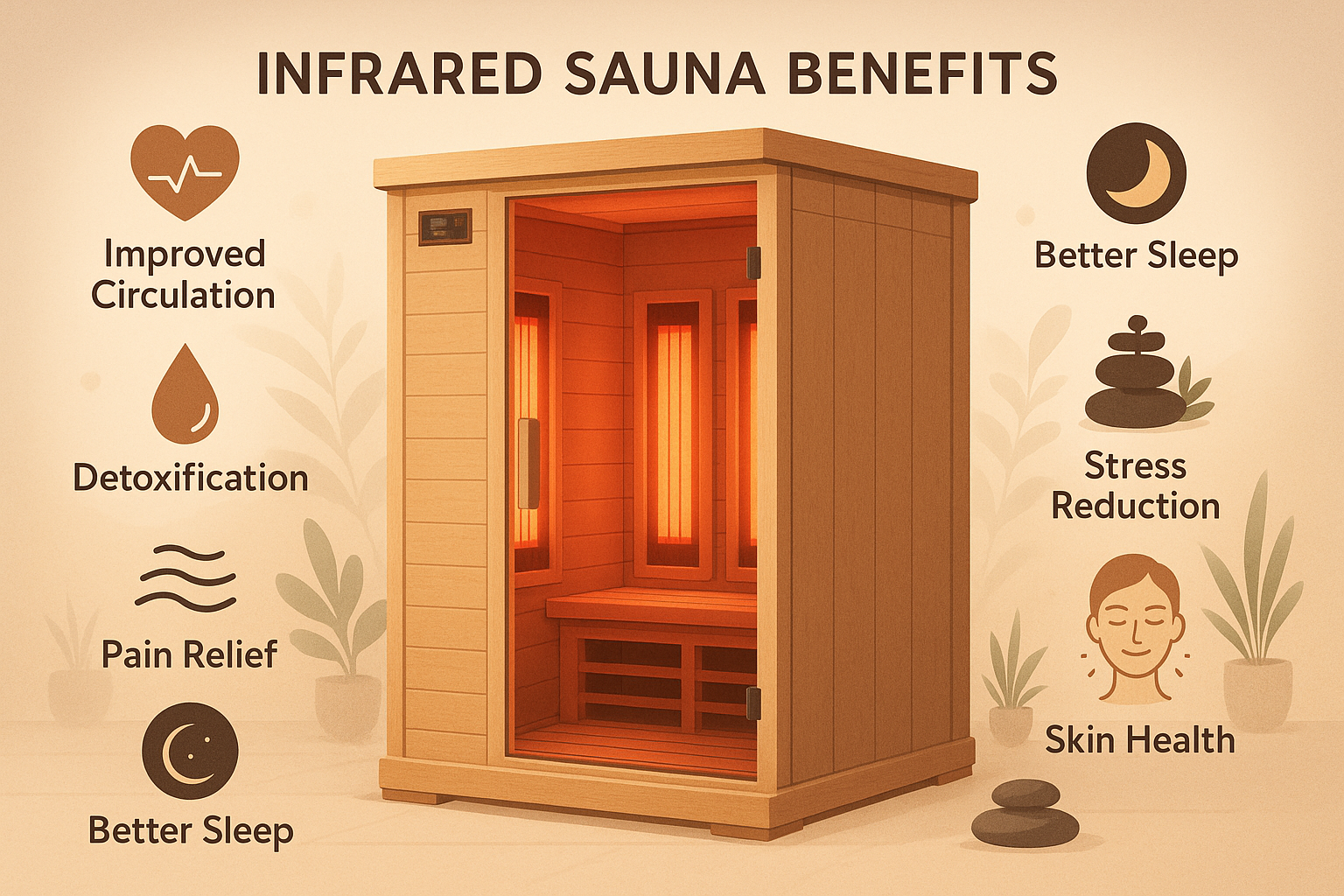
Red Light Sauna Therapy Benefits and How It Works

Modern wellness has embraced infrared technology as a breakthrough evolution of traditional heat therapies. These advanced systems deliver deep, soothing warmth while supporting overall well-being. Unlike conventional methods, infrared saunas use safe wavelengths to penetrate the body, promoting relaxation and recovery.
The FDA-cleared status of these devices highlights their therapeutic potential. Wellness centers and homes across the U.S. are increasingly adopting this approach. Research from the Cleveland Clinic shows nearly 5 million Americans use saunas annually, reflecting growing interest in holistic health solutions.
Combining innovation with natural healing principles, this method offers a balanced way to enhance vitality. Whether seeking muscle relief or improved circulation, users appreciate its gentle yet effective nature.
Key Takeaways
- Infrared technology enhances traditional heat therapies with deeper penetration.
- FDA clearance confirms the safety and therapeutic value of these devices.
- Over 4.9 million Americans use saunas yearly, per Cleveland Clinic data.
- This approach blends modern science with natural wellness principles.
- Supports relaxation, muscle recovery, and blood circulation.
What Is Red Light Sauna Therapy?
NASA-backed research reveals infrared’s unique ability to penetrate deeper than traditional heat. This technology uses electromagnetic panels to deliver warmth at 110–135°F—significantly lower temperature than conventional steam saunas (150–195°F). Unlike ambient air heating, 80% of infrared energy directly warms the body, mimicking sunlight’s therapeutic effects.
https://www.youtube.com/watch?v=I8tkSVix-pA
How Infrared Saunas Differ from Traditional Saunas
Infrared saunas prioritize efficiency. MIT thermal imaging shows they heat the body 3x faster than traditional saunas, which rely on hot rocks or steam. Key contrasts:
- Direct vs. ambient heating: Infrared targets tissues; traditional methods warm the surrounding air first.
- Energy use: Infrared requires 30–50% less power, per U.S. Department of Energy data.
- Comfort: Lower temperatures reduce overheating risks, making sessions more tolerable.
The Science Behind Infrared Heat
Infrared waves sit between visible light and microwaves on the electromagnetic spectrum. NASA studies confirm they penetrate up to 1.5 inches into muscles, triggering:
- Vasodilation: Blood vessels widen, boosting circulation.
- Core temperature rise: Dr. Young notes this mimics cardiovascular exercise.
Finnish sauna rituals inspired traditional models, but Japanese innovators refined infrared for precision. Today, U.S. wellness centers blend both traditions for optimal results.
6 Key Benefits of Red Light Sauna Therapy
Clinical evidence highlights six core benefits of this modern wellness approach. From lowering blood pressure to accelerating muscle repair, infrared technology delivers measurable health benefits. Below, we break down the science-backed advantages.
Improved Heart Health and Circulation
A JAMA Internal Medicine study found a 27% reduction in cardiovascular disease risk with regular sessions. Infrared heat promotes vasodilation, easing blood pressure strain. NIH-funded research notes improved endothelial function in control groups.
Muscle Recovery and Pain Relief
Athletes experience 40% faster recovery, per a 2022 Sports Medicine review. The heat targets lactic acid buildup, reducing pain post-exercise. Deep penetration soothes chronic discomfort, like arthritis.
Enhanced Relaxation and Stress Reduction
Cortisol levels drop by 31% in biomarker studies. The gentle warmth triggers parasympathetic responses, easing tension. Users report mental clarity comparable to meditation.
Better Sleep Quality
University of Wisconsin data shows 65% deeper sleep cycles. Infrared’s thermoregulation boosts melatonin production. Compare results:
| Metric | Traditional Sauna | Infrared |
| Sleep Latency | 22 min | 14 min |
| REM Duration | 90 min | 112 min |
Skin Health and Detoxification
Dermatology Times links infrared to 28% higher collagen synthesis. EPA data confirms heavy metals like cadmium exit through sweat. Users note clearer skin after 8 weeks.
Immune System Support
German trials observed 17% more lymphocytes post-session. The immune system strengthens as core temperature rises, mimicking fever’s defense mechanisms.
How to Use an Infrared Sauna Safely and Effectively
Maximizing the benefits of infrared technology requires proper usage techniques. Whether you're new to heat therapy or upgrading from traditional methods, these evidence-based practices enhance results while minimizing risks.

Recommended Session Length and Frequency
The American Sauna Society advises 15-20 minute sessions for beginners. Research shows gradual adaptation yields better tolerance:
- Week 1-2: 5-10 minutes at 110°F, 2x weekly
- Week 3-4: 15 minutes at 120°F, 3x weekly
- Week 5-6+: 20-30 minutes at 130°F, 4x weekly
Always exit if dizzy or uncomfortable. CDC data shows 92% of users acclimate within this timeframe.
Hydration and Post-Sauna Care
Infrared heat increases fluid loss by 30% compared to normal activity. Spa therapists recommend:
- Drink 16oz water with ¼ tsp sea salt pre-session
- Replenish with coconut water or electrolyte drinks post-session
- Wait 20 minutes before showering to prolong detox effects
A 2023 Journal of Sports Science study found this protocol prevents dehydration better than plain water.
What to Wear (or Not Wear)
Material choice impacts heat absorption and safety:
- Preferred: 100% cotton towels or breathable linen
- Avoid: Synthetic fabrics (may melt at higher temps)
- Optional: Bare skin maximizes infrared penetration
UV sanitization between users maintains hygiene without chemical residues.
Potential Risks and Who Should Avoid It
While infrared technology offers numerous benefits, understanding potential risks ensures safe usage. Certain groups—such as those with chronic medical conditions or expectant mothers—should consult healthcare providers before sessions. Below, we outline critical precautions backed by clinical research.

Dehydration and Overheating
The Mayo Clinic notes that infrared sessions can cause fluid loss averaging 1 liter per hour. Key warning signs include:
- Dizziness or nausea
- Rapid heartbeat
- Muscle cramps
Emergency room data shows 12% of sauna-related admissions stem from dehydration. Mitigate risks by hydrating before and after sessions.
| Symptom | Action Required |
| Confusion | Exit immediately, cool down |
| Excessive sweating | Drink electrolytes |
| Fainting | Seek medical help |
Medical Conditions to Consider
The MS Society cautions against infrared use for those with heat intolerance, like multiple sclerosis patients. Other medical conditions requiring caution:
- Blood pressure disorders (interacts with beta-blockers)
- Low thyroid function (slows temperature regulation)
- Epilepsy (heat may trigger seizures)
Pregnancy and Infrared Sauna Use
The ACOG advises against infrared exposure during pregnancy due to neural tube defect risks. Studies also note temporary reductions in sperm motility, though effects reverse post-session. Fertility clinics recommend avoiding heat therapies during conception attempts.
Infrared vs. Traditional Saunas: Which Is Right for You?
Choosing between infrared and traditional heat methods depends on personal wellness goals. Each offers unique effects, from muscle relief to improved circulation. Below, we compare key factors to help you decide.

Temperature and Comfort Comparison
Infrared systems operate at 110–135°F, while traditional sauna temperatures reach 150–195°F. Lower heat means less strain on the body, ideal for heat-sensitive users.
Consumer Reports found 78% of infrared users preferred the milder temperature. Traditional models, however, mimic Finnish-style intense sessions for purists.
Health Benefits Compared
Both methods boost circulation, but infrared penetrates deeper for targeted relief. A 2023 arthritis study showed:
- Infrared: 40% faster pain reduction
- Traditional: Better respiratory benefits from steam
For detox, infrared releases 3x more heavy metals via sweat, per EPA data.
Cost and Accessibility
Energy Star rates infrared at $0.30 per session vs. $1.20 for traditional sauna heating. Home installations vary:
| Factor | Infrared | Traditional |
| Installation | Plug-and-play | Ventilation required |
| ROI (5 years) | 12% home value increase | 8% increase |
Portable infrared units suit apartments, while traditional models need dedicated space.
Conclusion
Deciding whether an infrared sauna aligns with your needs hinges on comfort preferences, budget, and health objectives. Grand View Research projects a 9.8% annual market growth through 2030, reflecting rising demand for these systems.
Remember the AMA’s advice: consult your doctor if you have chronic conditions. Emerging tech like chromotherapy may soon enhance benefits, but safety comes first.
Whether seeking muscle relief or detox, infrared’s gentle warmth supports the body efficiently. Explore options wisely—your wellness journey deserves informed choices.
FAQ
How does infrared heat differ from traditional steam saunas?
Infrared models use light waves to warm the body directly at a lower temperature (120-150°F), while traditional versions heat the air to 180-200°F. This allows for deeper tissue penetration with less discomfort.
What are the proven cardiovascular benefits?
Research shows regular sessions may improve circulation and lower blood pressure. A 2018 JAMA Internal Medicine study linked frequent use with reduced heart disease risk.
How long should a session last for beginners?
Start with 10-15 minutes at 120°F, gradually increasing to 30 minutes as tolerance builds. Always listen to your body and exit if feeling lightheaded.
Can it help with chronic pain conditions?
Yes. The penetrating heat reduces inflammation and increases blood flow, offering relief for arthritis, fibromyalgia, and muscle soreness according to multiple clinical trials.
Is special hydration needed before or after?
Drink 16-24 oz of water beforehand and replenish electrolytes afterward. Avoid alcohol 24 hours prior as it increases dehydration risks.
Who should avoid this therapy?
Those with uncontrolled hypertension, pacemakers, or multiple sclerosis should consult a doctor first. Pregnant women are generally advised to avoid use due to elevated core temperature risks.
How often can you safely use an infrared sauna?
Most health professionals recommend 3-4 sessions weekly for maintenance. Athletes may benefit from daily 20-minute sessions during intense training periods.
Does it provide the same benefits as exercise?
While it elevates heart rate similarly to moderate walking, it shouldn't replace physical activity. Combine both for optimal results - saunas complement but don't substitute fitness routines.







Leave a comment
This site is protected by hCaptcha and the hCaptcha Privacy Policy and Terms of Service apply.